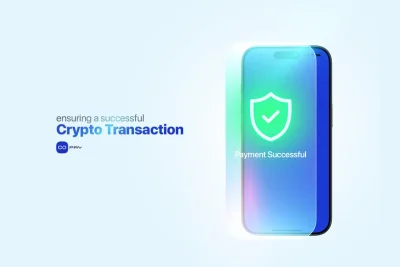Businesses are turning to cryptocurrency payments to reach new customers and make transactions smoother. But with so many options, it can be confusing to choose the right one. Bitcoin (BTC) and Tether (USDT) are two of the most popular choices for business payments. This guide explores the key differences between USDT vs. Bitcoin to help you decide which one is right for your business.
Why Cryptocurrency Payments Are Becoming Popular
Cryptocurrencies are changing how we make payments by offering many benefits over traditional methods. They have much lower transaction fees, quicker processing times, and better security due to blockchain technology. Plus, they aren’t restricted by borders, making international transactions faster and easier.
As the global economy becomes more connected, businesses are increasingly drawn to cryptocurrencies as flexible and innovative payment solutions.
What Is Bitcoin?
Bitcoin, launched in 2009, was the first cryptocurrency. It’s still the most well-known and widely used. It works on a decentralized network of computers that validate transactions through mining. Bitcoin is not only a groundbreaking technology but also a valuable investment due to its increasing value over time.
How Do Bitcoin Payments Work?
Bitcoin payments work through a peer-to-peer network. Transactions are verified by network nodes and recorded on a public ledger called the blockchain. This system cuts out middlemen like banks, reducing transaction fees and speeding up transactions.
Key Features of Bitcoin
- Decentralization: No one controls the network.
- Limited Supply: Only 21 million bitcoins will ever be created, helping prevent inflation.
- Transparency: All Bitcoin transactions are publicly viewable on the blockchain.
- Security: Cryptography makes Bitcoin transactions secure and unchangeable.
What Is USDT (Tether)?
Tether (USDT) is a stablecoin, a type of cryptocurrency that aims to keep its value stable by pegging it to a fiat currency, usually the US dollar. Tether achieves this stability by holding reserves in traditional currencies equal to the number of USDT in circulation.
How Do Tether (USDT) Payments Work?
USDT payments works on blockchain technology like other cryptocurrencies, but its stable value against the dollar makes it ideal for transactions where price changes can be a problem.
Key Features of USDT
- Price Stability: Pegged to the US dollar to reduce volatility.
- Widespread Use: Popular for transactions and trading in the crypto world.
- Efficiency: Offers fast transactions and low fees without the price swings of other cryptocurrencies.
Comparison of Bitcoin vs. USDT
Bitcoin is often seen as an investment because of its price fluctuations. Meanwhile, USDT is stable and better for everyday transactions.
| Feature | Bitcoin (BTC) | Tether (USDT) |
| Type | Cryptocurrency | Stablecoin |
| Value Fluctuation | High | Low |
| Transaction Fees | Relatively High | Relatively Low |
| Transaction Speed | Slower | Faster |
| Supply | Limited (21 million) | Variable |
| Underlying Technology | Bitcoin Blockchain | Varies |
Choosing Between Bitcoin and USDT for Payments
The choice between Bitcoin and USDT depends on your business needs:
- Bitcoin: Best for businesses seeking long-term investment and who can handle price volatility.
- USDT: Ideal for businesses needing predictable and stable transactions.
Factors to Consider
- Price Volatility: If you prefer a stable value for received payments, USDT is better choice.
- Transaction Fees: If processing fees are a concern, USDT generally has lower fees.
- Transaction Speed: If faster settlement times are crucial, USDT is usually faster.
- Long-Term Value: If you believe in Bitcoin’s long-term value appreciation potential, accepting Bitcoin might be strategic.
- Market Acceptance: Bitcoin is more widely accepted, while USDT is popular on crypto exchanges.
When to Use Bitcoin (BTC) for Payments
Bitcoin works well for businesses making large transactions, where value appreciation could bring extra gains. It’s also useful in highly speculative markets.
Advantages of Bitcoin Payments
- Potential for investment growth.
- Increased privacy and security.
- Decentralized
Scenarios Where Bitcoin Payments Shine
- High-value transactions where potential appreciation is beneficial.
- International dealings where traditional banking is cumbersome.
When to Use Tether (USDT) for Payments
USDT is great for businesses that need stable transactions for consistent budgeting and planning.
Advantages of Tether (USDT) Payments
- Predictable value alignment with the US dollar.
- Suitable for frequent, routine payments.
- Faster transaction processing compared to Bitcoin.
- Potentially lower transaction fees compared to Bitcoin.
Scenarios Where Tether (USDT) Payments are Ideal
- Daily Business Expenses: Useful for managing daily expenses.
- Immediate Settlements: Ideal when payments need quick settlement without value risk.
- E-commerce Sales: Stability makes it good for online stores.
- Subscription Services: Predictable revenue with recurring USDT payments.
- Businesses with high transaction volume: Faster processing and lower fees help high-volume businesses.

OxaPay: Your Secure Crypto Payment Gateway
OxaPay is a powerful payment gateway that helps businesses easily accept cryptocurrency payments. It’s secure and user-friendly, making it a reliable choice for businesses looking to explore digital currency transactions.
How OxaPay Simplifies Cryptocurrency Payments for Businesses
OxaPay makes it easy to integrate cryptocurrency payments by providing a simple interface and technical support. Businesses can adopt crypto payments without needing deep knowledge of blockchain technology.
Accepting payments Bitcoin and Tether with OxaPay
OxaPay lets businesses accept both Bitcoin and Tether as payment options. By using OxaPay, companies can handle the technical challenges of cryptocurrency payments like ensuring transaction security, managing Bitcoin’s price changes, and keeping USDT’s stable value. The platform integrates smoothly with existing financial systems, allowing for secure and seamless digital currency transactions.
Integrating USDT and Bitcoin with OxaPay
To start using OxaPay, businesses simply sign up on the platform without the need for KYC/KYB verification. Registering involves creating an account and setting up payment preferences to accept Bitcoin and USDT. You can then integrate these options into your existing financial systems.
Integrating OxaPay with Your Business
Integrating OxaPay into your business operations involves installing the payment gateway plugins or linking it through API connections provided by OxaPay. This setup allows seamless interaction with your existing financial and e-commerce systems. Customization options enable businesses to tailor the payment processes to their specific needs, ensuring a smooth integration that aligns with their operational workflows.
Enabling Cryptocurrency Payments with USDT and Bitcoin
After OxaPay is integrated, businesses can activate Bitcoin and USDT payments. You can manage this through the OxaPay dashboard, where you can easily adjust settings for secure and efficient cryptocurrency transactions.
Managing Your Crypto Payments with OxaPay: Tips and Best Practices
To handle crypto transactions via OxaPay effectively:
- Update your API regularly.
- Monitor transaction logs for unusual activity.
- Train your staff on how to handle and secure cryptocurrency.
Following these best practices ensures secure operations that meet the latest digital payment standards.
Conclusion
Choosing between Bitcoin and USDT depends on your business needs. Bitcoin offers investment potential, while USDT provides stability. OxaPay’s payment gateway makes it easy to use both, helping your business make the most of cryptocurren




